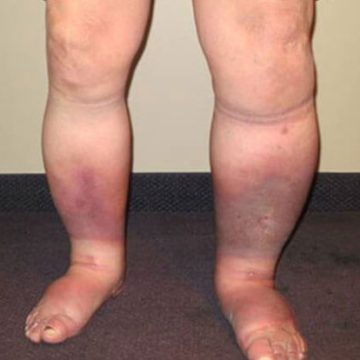US President, Donald Trump has been diagnosed with chronic venous insufficiency after experiencing leg swelling.
The condition is common among older adults and, while not usually dangerous, needs proper evaluation to rule out more serious health issues.
What is chronic venous insufficiency?
Chronic venous insufficiency (CVI) occurs when leg veins can’t effectively return blood to the heart.
This leads to blood pooling in the lower legs.
Common symptoms include swelling in the feet and ankles, aching or heavy legs, tingling, and varicose veins.
Trump diagnosed with Chronic Venous Insufficiency after leg swelling
In more severe cases, it can cause slow-healing leg sores known as ulcers.
What causes it?
Leg veins have one-way valves that help blood move upward toward the heart.
When those valves are damaged, blood can flow backward and collect in the veins.
“Overcoming gravity to pump blood from the feet all the way up to the heart is a challenge, especially when someone is standing or sitting for long periods,” the report noted.
Risk factors include blood clots, vein inflammation (phlebitis), and being overweight.
How is it diagnosed and treated?
Doctors begin by ruling out other causes of leg swelling, such as heart disease, kidney problems, or blood clots.
Ultrasound imaging helps confirm a diagnosis of CVI.
According to the Cleveland Clinic, “treatment can include wearing compression stockings, elevating the legs and achieving a healthy weight.”
Exercise, especially walking, is also encouraged to strengthen the legs and improve circulation.
In advanced cases, medications or medical procedures may be needed.
(AP)
ALSO READ TOP STORIES FROM NIGERIAN TRIBUNE
WATCH TOP VIDEOS FROM NIGERIAN TRIBUNE TV
- Let’s Talk About SELF-AWARENESS
- Is Your Confidence Mistaken for Pride? Let’s talk about it
- Is Etiquette About Perfection…Or Just Not Being Rude?
- Top Psychologist Reveal 3 Signs You’re Struggling With Imposter Syndrome
- Do You Pick Up Work-Related Calls at Midnight or Never? Let’s Talk About Boundaries








